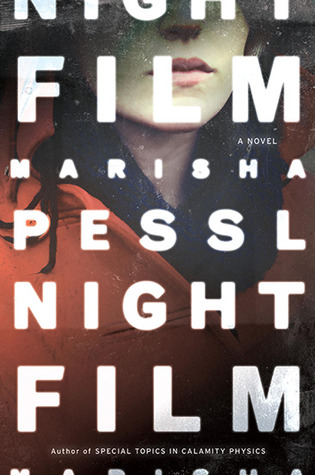I didn’t get to Marisha Pessl’s bestselling Special Topics in Calamity Physics until
this past summer, when I picked up a copy from a secondhand bookstore. I had
almost bought and read the book about twenty times since its publication in
2006. There was always a hardcover copy of the book at the secondhand bookstore
that I worked at for almost three years, a huge tome that never left the shelf.
I started to read it a handful of times, and almost bought it a handful more,
but it wasn’t until this past summer with all of the advance press for Pessl’s
second book, Night Film, that I
remembered how much I really wanted to read Special
Topics in Calamity Physics. I found a copy in a store in Whitefish, Montana
and did what I always do when I put off buying a book that I really want to
read: read it in almost one sitting and regret not having read it earlier.
So when Pessl’s Night
Film was published in August, I only let a couple of months go by before I
picked it up, instead of a couple of years.
Night Film follows
main character Scott McGrath, an investigative journalist living in New York,
as he returns to a past subject of his writing and research work, cult
filmmaker Stanislas Cordova. Years before the book begins, McGrath focused his
investigations on the filmmaker, a recluse who was believed not to have left
his sprawling mansion – The Peak – for years. After slandering Cordova in the
media, McGrath loses his credibility, his savings, and his wife. It would seem
like the last thing McGrath wants to do is make Cordova the subject of his
writing again, but when Cordova’s twenty-four-year-old daughter Ashley turns up
dead at a New York warehouse, McGrath can’t help but get involved in the
investigation.
The mystery surrounding Ashley’s death slides back and forth
between fantasy and reality, and the deeper McGrath goes into the
investigation, the more difficulty he has distinguishing between the two. He
teams up with two unlikely investigative partners, Hopper, who McGrath is
pretty sure is a drug dealer, and Nora Halliday, a nineteen-year-old coat check
girl who spent her adolescence living in a nursing home with her grandmother.
Pessl’s writing stands out in her descriptions of Hopper and Nora, and especially
their interactions with McGrath. When Nora approaches him for a hug, McGrath
describes, “She reached up onto her tiptoes and hugged me. The girl gave the
most premium of hugs – skinny arms clamped around your neck like zip ties, bony
knees bumping yours. It was like she was trying to get an indelible impression
of you to take away with her forever.” Like in Special Topics, Pessl creates nuanced and quirky characters who, on
the surface, don’t seem real, but the details she slowly unravels about them
(and descriptions like these), make them more and more believable as the story
goes on.
McGrath delves into the cultish Cordova world, exploring the
Blackboards, a fan-base message board on the hidden Internet. He describes
Cordova’s work in some detail, horror films that are both terrifying and almost
impossible to get a copy of. McGrath moves back and forth between this
horrifying supernatural world and the reality that he has a tenuous hold on,
unsure if he is going to make it out of the mystery alive. At one point, he
considers what it would mean to lose his life to the supernatural mystery:
“I’d barely worn it out. Life had
been a suit I’d only put on for special occasions. Most of the time I kept it
in the back of my closet, forgetting it was there. We were meant to die when it
was barely stitched anymore, when the elbows and knees were stained with grass
and mud, shoulder pads uneven rom people hugging you all the time, downpours
and blistering sun, the fabric faded, buttons gone.”
The way Night Film
balances between a supernatural horror and a real one, bouncing back and forth
between the two, makes this an actually terrifying story. It’s a mystery, a
thriller, and a work of literary fiction that moves between prose and newspaper
clippings, black and white photographs, website screen shots, transcripts, and
more, never subscribing to exactly one thing or another. Instead it constantly
moves between mediums and genres, putting the responsibility of finding the
balance on the reader. It ends up being a choose-your-own-adventure: fantasy or
reality or in-between.





No comments:
Post a Comment